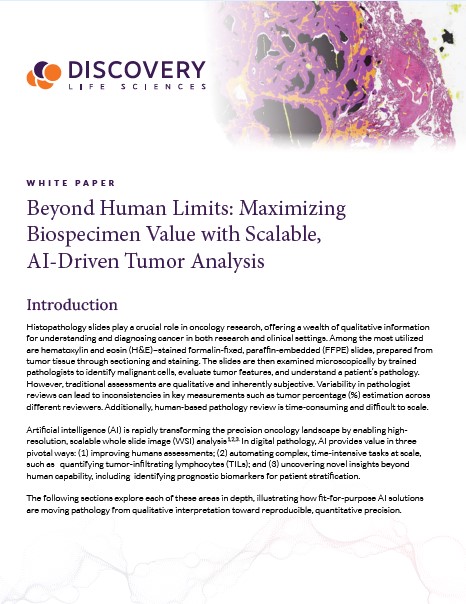
Histopathology slides play a crucial role in oncology research, offering a wealth of qualitative information
for understanding and diagnosing cancer in both research and clinical settings. Among the most utilized
are hematoxylin and eosin (H&E)–stained formalin-fixed, paraffin-embedded (FFPE) slides, prepared from
tumor tissue through sectioning and staining. The slides are then examined microscopically by trained
pathologists to identify malignant cells, evaluate tumor features, and understand a patient’s pathology.
However, traditional assessments are qualitative and inherently subjective. Variability in pathologist
reviews can lead to inconsistencies in key measurements such as tumor percentage (%) estimation across
different reviewers. Additionally, human-based pathology review is time-consuming and difficult to scale.


